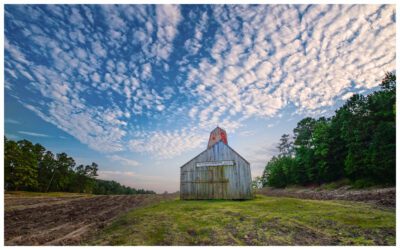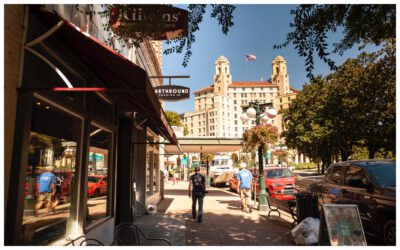[title subtitle=”words: Marla Cantrell images: Marcus Coker”][/title]
This day is perfect. The blackgum leaves have already turned red, the hickory leaves are brilliant yellow, and the air is crisp but not cold. Traffic on the road to Heavener, Oklahoma is light on this Thursday morning. Not far from the city limits in this town of 3,400 is Southern Belle Restaurant, which is housed inside an old eighty-ton rail car that first passed through the town on its way to New Orleans back in 1896.
Today, most of the diners are eating the signature chicken, which is marinated, breaded, deep fried, and served with the house dipping sauce that the staff calls famous, and with good reason. This is some of the best sauce, and the best Southern cooking, you’ll find anywhere. Stephanie Neidecker, who’s worked here twelve years, says she gets asked for the sauce recipe at least once a week, but she’s never been tempted to give it out. The secret stays within this train car, where folks from as far away as Germany and China have come to eat.
Besides the chicken, there are grilled pork chops, steaks, homemade pies and cheesecakes, a massive salad bar, and all-you-can-eat catfish on Friday. The other draw of Southern Belle is the train car itself. It is impressive, seventy feet long, seating fifty-two guests easily. In its heyday, the KCS Southern Bell was called the sweetheart of American trains. Later, the train was used to carry soldiers during World War I, and during that time, a sign that read “Buy War Bonds” was affixed to the car.
But nothing lasts forever, and by the mid-1950s Southern Belle’s car 108 was sitting idle. A longtime switchman for the railroad, Ralph Anderson, who was about to retire, hated to see the old train car falling into disrepair, so he sat down at his typewriter and wrote the following:
Heavener, Oklahoma
September 8, 1956
Mr. W.B. Johnson
Asst. Superintendent Machinery
Pittsburg, Kansas
Dear Bus:
I was up at the Rip Truck the other day and was talking with Archie regarding the old bunk car that is being replaced with the 042 and was wondering if it would be possible for a fellow to liberate the 0180 and move it out to Wister Lake for a fishing camp. If it wouldn’t be appropriate for a fellow to liberate the old car; what would be the cheapest price that he could acquire the car for?
I would really like to have the old car and believe that I could make a pretty good fishing camp out of it and would even issue a card good at any time to you in consideration for any help you could give me in securing it. Of course we might not have all the liquid refreshments that we have had in the past but I believe we could make a little headway in that direction.
Would appreciate hearing from you at your earliest convenience regarding acquiring the car.
Thank you.
Sincerely,
Ralph Anderson
Beneath the letter is a handwritten note that reads:
Ralph, Wrote you today on this. GM says to let you have the car, no charge. Signed, WBJ 9/14.
With that, the Southern Belle 108 made its way to nearby Pottsville Mountain, where Ralph used it for a while as a cabin.
In the late 1990s, when the train car was sitting idle, Eddie and Lisa Nelson stepped in. They believed the Southern Belle could be reincarnated into a restaurant. A house moving company was called in. The first attempt ended with the crane’s cable snapping as it tried to hoist the train car onto the trailer bed. Next, a trailer was constructed beneath the train after jacks helped lift it, and three winch trucks were brought in to help ease it down the mountain.
So big was the effort that folks stood on their porches and out in their yards to watch the train shuffle down the winding mountain. Traffic inched along behind the Southern Belle, which finally made it to its current location.
The cost of refurbishing the old car was fifty grand. Partitions that once segregated black and white passengers, along with partitions that segregated the smokers from non-smokers, came down. A kitchen was installed, and the entire floor was replaced.
After three years, Debra and Kenneth Crabtree bought the restaurant from the Nelsons, who are Debra’s sister and brother-in-law. Today, the Crabtree’s son, Danny, serves as manager, and helps cook and make pies. Their customers are both local – some come in as much as three times a week – and international. Many come on tour buses, such as the group from China that showed up last year while on a tour of the United States.
Stephanie, along with the other wait staff, wears a striped railroad hat and blue bandana tied around her neck. She loves to tell the story of this place. “I get asked questions all the time, and it’s fun to answer them. I get to work in a piece of history every day.” Stephanie points to one of the many windows and says, “There’s a train track nearby and sometimes, when the train comes by, you can feel the vibrations.”
This old car spent fifty-two years riding the rails, and could have ended up as scrap metal if the switchman hadn’t seen a new use for it. And its life could have ended there if someone else hadn’t reincarnated it into the eatery it is today.
Stephanie thinks her life would be much different if she hadn’t happened across this place, hadn’t gotten this job, and then gotten to know so many of the townspeople. “I’ve been here so long that the babies that used to come in here with their mamas are all grown up. But the people have watched me grow up, too. I came here from South Carolina when my dad got a job here. I wouldn’t live anywhere else. I tried the city life once or twice since I moved here, but I always come back. I like our little town.”
Traffic is picking up, and Stephanie leaves to take care of the new customers. Each day, the diner sells around forty pieces of pie, and today’s been so busy she’s getting low on the favorites, coconut cream pie and Butterfinger cheesecake. She goes to the kitchen to see if there’s a surplus she doesn’t know about.
Country music is playing in the background, there is laughter coming from a group in a booth near the entrance. Just then, in the distance, a train whistle blows, as a warning, of course, but maybe also as a nod to the Southern Belle, a grand old girl with a long and productive life.




